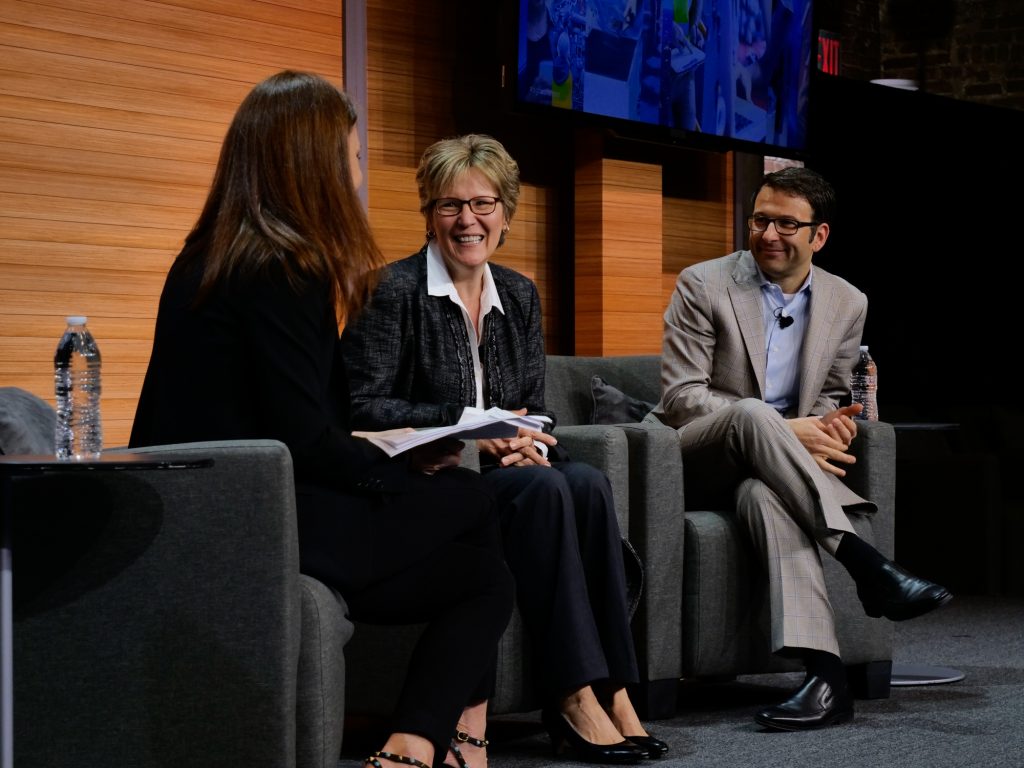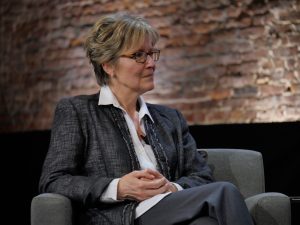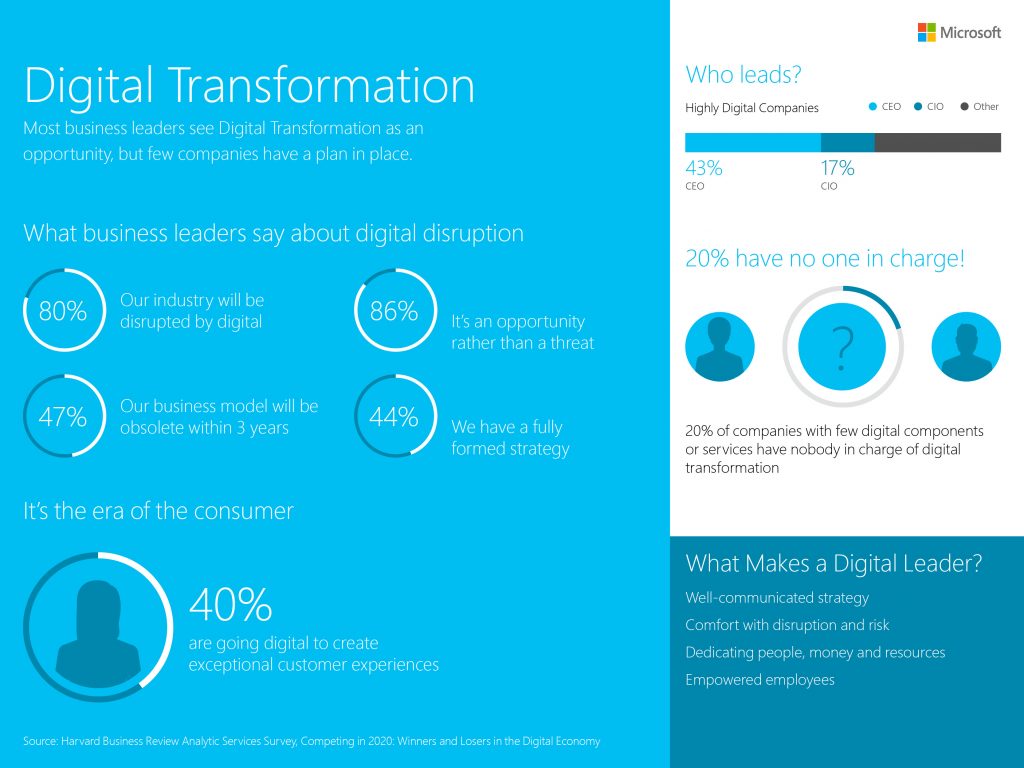Who will win in the digital economy? Biz-tech analyst Abbie Lundberg offers a forecast
A wave of digital disruption is cresting in many industries and will engulf much of the rest within three years, but most organizations still have no strategy to leverage the moment, according to a new report by Harvard Business Review Analytic Services and Microsoft.
The report’s author, HBR Analytic Services contributing editor Abbie Lundberg, revealed the findings Wednesday in New York City at the “Digital Difference” event hosted by Microsoft. Her analysis pulls from a survey of nearly 800 digital decision makers and influencers at companies around the world.
Lundberg, former editor-in-chief of CIO magazine, also sat for a recent interview to discuss four key elements of the report, entitled, “Competing in 2020: Winners and Losers in the Digital Economy.”
Transform: You’ve been a leader in technology and digital transformation. How do past tech periods, like those rooted in IT and information systems, compare with what’s happening today in artificial intelligence and automation?
Abbie Lundberg: I joined CIO magazine in 1989. We’ve been through a lot of different epochs in the business technology space between then and now, and I’ve never seen a more dynamic time. The things that are finally able to come together are remarkable, and the change is happening quickly. A lot of these technologies have been around for a long time. Artificial intelligence is not new. Sensors are not new. But with the cloud and with the increasingly lower cost of computing, the ability to bring together all of these capabilities is just making things possible that were never possible before.
Transform: The report finds that 80 percent of the digital leaders surveyed expect industry disruption, but only 47 percent said their company has developed a strategy for its digital future. Why does this strategy gap exist?
Abbie Lundberg: It has a lot to do with leadership. We segmented the companies in the survey by the digital leaders, the hybrids [that have digitized some of their operations], and the non-digitals. The non-digitals basically said, ‘We aren’t doing anything as far as digital enablement of our products or operations.’
What I found interesting and surprising is that those people recognize the disruption potential of their industry just as much as anybody, yet so few of them have developed a strategy. Only 25 percent of that group said their business leaders understand what their business model will look like in 2020 and beyond, compared with 66 percent of the digital leaders, and yet they’re also saying their current business model is going to be obsolete.
It’s fascinating that they see the threat, they see that this is happening and yet they’re not doing anything. It comes back to their leadership. If they don’t have a CEO that has a vision for what this is going to be like in the future, it’s really hard to get off the dime and get anything done.
Transform: What traits or elements make a good digital leader?
Abbie Lundberg: Most of it is just what makes a good leader, period. That means: Having a vision for the company; being able to communicate that vision effectively throughout the organization so that it galvanizes people; and then having the strategy in place that will map out how we’re going to get there, and what that’s going to look like.
The new part is something that came up in the research – those digital-leader companies were more likely to have the CEO at the head of their digital effort. Two things about that. One, business leaders are becoming more technology literate and they understand more about the potential of digital, what it could do for their customers and their companies. Two, 67 percent of the respondents said the CIO was essential to their company’s digital transformation efforts.
That really lines up with a lot of other research, particularly some research from the MIT Center for Digital Business. MIT found that in companies that are doing this most effectively, if a CIO is not leading digital, there’s a strong partnership between the CIO and whoever is leading it, whether that’s the chief digital officer or the CEO or a line-of-business executive. That strong partnership is a very critical success factor.
Transform: How should companies prepare their workforce to flourish in the digital future?
Abbie Lundberg: The title of this report is ‘Winners and Losers,’ and I really see that theme coming out of this research. The digital leaders have already put into place a lot of those digital skills. They’re enabling their employees with data, training and the ability to leverage different tools and different kinds of information. But more importantly, their front-line employees have been empowered and given the information and tools that they need to be able to exploit information in a useful way. Getting to that point isn’t easy.
This is where I see some non-digital companies getting into trouble. Even if those non-digital companies woke up tomorrow and said, ‘OK, we’ve got to start doing this, digitally preparing our workforce for the future,’ it takes a lot time to get those skills in place and to develop that culture. A lot of it is about culture, saying that this is a very different way of doing things.
Transform: If a business is just starting to create its digital strategy, what are some smart, first steps to move forward efficiently?
Abbie Lundberg: The place to start is with customers – how are their preferences and behaviors changing? We interviewed a large Mexican food company whose CEO had forbidden investment in digital advertising until two years ago. They quickly found that consumer engagement in digital channels exceeded their expectations – to the point where they are increasing their digital spend from 10 percent of their advertising budget last year to 40 percent in the year ahead.
Top photo: Harvard Business Review Analytic Services contributing editor Abbie Lundberg with Microsoft’s Turi Widsteen and Judson Althoff at the Digital Difference event in New York City. (Photo by Brian Smale)










